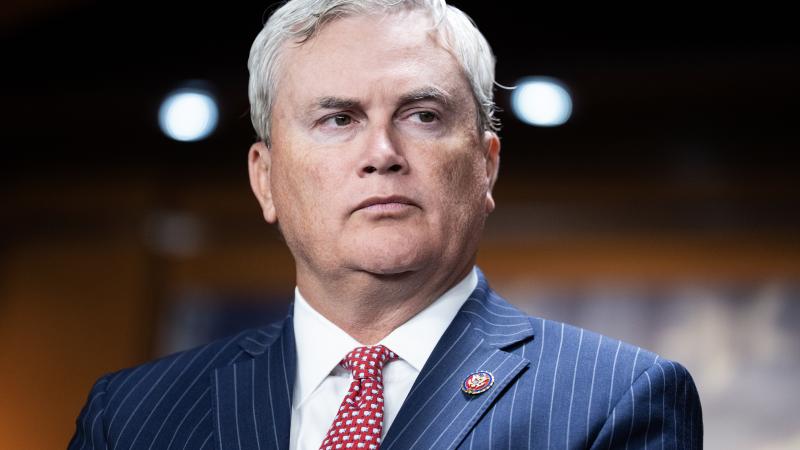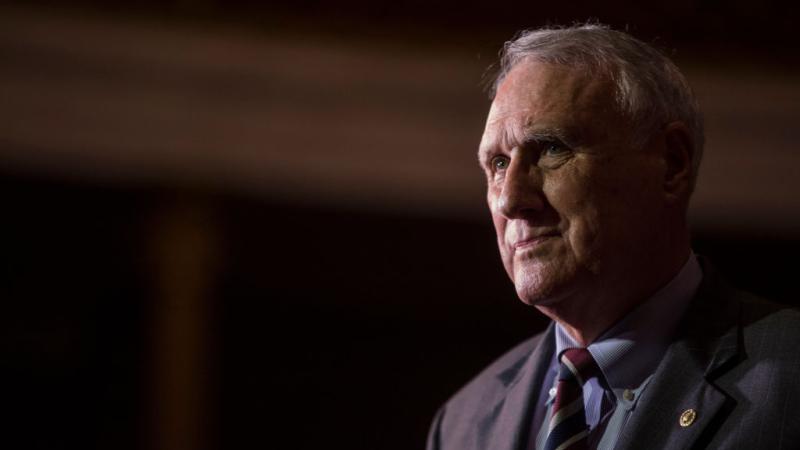Witnesses pick apart school closure arguments, as House COVID panel probes teachers' clout with CDC
U.S. has "very myopic America-centric idea that nothing is happening outside our bubble" even though Europe was reopening with little problem, Twitter Files journalist tells lawmakers.
Congressional Democrats who have long looked to Europe to inform American policymaking have become America Firsters on COVID-19 school closures and reopening guidelines, minimizing if not entirely ignoring the different policy choices from Spain to Sweden at a House Oversight coronavirus subcommittee hearing Tuesday.
European schools reopened in person much faster, without stringent conditions of the kind that American teachers' unions and other Democratic interest groups said were necessary to mitigate spread, including six feet of social distancing, mask mandates, contract tracing and nearly $200 billion in additional federal appropriations not explicitly conditioned on making schools safer.
"I would caution all of us against Monday morning quarterbacking," Rep. Kweisi Mfume (D-Md.) said, denying an "apples-to-apples" comparison was possible between the U.S. and the 44 countries in Europe.
Democrats steered the hearing toward former President Trump's "lethal recklessness and lying," in the words of full committee ranking member Jamie Raskin (D-Md.), and Trump's failure to provide a plan or resources for schools to "safely and responsibly" reopen, as subcommittee ranking member Raul Ruiz (D-Calif.) put it.
They invoked methodologically challenged research finding that masks and social distancing sharply reduced transmission and repeatedly claimed that 60% of schools had reopened "in a matter of months" following the CDC's February 2021 "operational strategy for K-12 schools."
Political interference in the CDC guidance is the target of more than a dozen requests for information Tuesday from subcommittee Chair Brad Wenstrup (R-Ohio) to education, health and government associations.
Emails between the CDC and American Federation of Teachers show that "suggestions" from the latter were incorporated "verbatim" into the guidance, whose conditions would keep schools closed in more than 90% of U.S. counties, according to Wenstrup's letters, which went to the CDC, AFT, National School Boards Association and National Association of School Nurses, among others.
NASN Executive Director Donna Mazyck, the Democrats' lone witness Tuesday, baffled GOP lawmakers by claiming she couldn't remember if it communicated with the CDC ahead of the guidelines' release but "fully intend[s] to cooperate" with the subcommittee.
Rep. Ronny Jackson (R-Texas) said it was "very concerning" Mazyck couldn't even distinguish between remembering that a conversation happened and the details of that conversation. "We're just starting to scratch the surface" on CDC political interference, he said.
Republicans invoked worsening mental health, more discipline problems and plummeting academic performance, particularly among poor and nonwhite children, as the predictable results of extended school closures, which in some parts of the U.S. lasted a year longer than Europe's.
A Danish-American epidemiologist who has taught in "very crowded" French classrooms, studied in-school COVID transmission for the CDC and closely followed European COVID outcomes echoed the GOP's narrative.
Over summer 2020, "we got increasingly disparate messages" from European public health authorities and the CDC, as the latter ramped up "fearmongering" about the risks of children contracting and transmitting COVID, the University of California San Francisco's Tracy Beth Hoeg told lawmakers.
In-school transmission to adults was "minimal to almost none in numerous studies" in the U.S. and Europe, including Hoeg's Wisconsin study, and no "high-quality evidence" during COVID has departed from pre-pandemic research finding little evidence that masks are effective against upper respiratory infection and transmission, she said.
"Somehow it became the normal thing to have schools closed until proven otherwise," Hoeg said, even as Denmark reopened schools after six weeks and the rest of Europe soon followed based on the "implicit understanding" that kids' well-being comes first. She suspects AFT pressure is responsible for the CDC's February 2021 guidance.
Rep. Mariannette Miller-Meeks (R-Iowa) said she sent the CDC a paper in the Journal of the American Medical Association Pediatrics that showed children are not "good transmitters" of the virus, but never heard back. The infection fatality rate from COVID in kids was "comparable to a typical seasonal flu" and is even lower now with widespread natural immunity, Hoeg responded.
The U.S. has a "very myopic America-centric idea that nothing is happening outside our bubble," testified Twitter Files journalist David Zweig, whose reporting has challenged the scientific basis for the CDC's schoolmasking guidelines and six-foot rule.
European schools also lack "sophisticated HVAC systems" demanded by American interest groups but refused to tolerate "baldly inequitable" outcomes from extended closures, Zweig told the subcommittee, citing "direct correlations between time out of school and learning loss" that widened achievement gaps by race.
Zweig, who is writing a book on school closures for MIT Press, asked if preventing 10-20 infections among 100,000 people each week — the difference between remote and in-person schools in the South from a Nature Medicine study — was a "reasonable tradeoff."
The evidence was "quite manifest in real time" that low-income children would either be "left home alone with a device all day" or sent to daycare or a relative's home, defeating the purpose of closures, he said. "These children did not operate in a vacuum."
The wealthy D.C. suburb of Arlington, Va., repeatedly "reneged" on its school reopening plans because leaders "feared the political consequences" from teachers' unions, said Virginia Gentles, who directs the Education Freedom Center at the Independent Women's Forum.
Some students got two days a week in person while their teachers remained remote in fall 2021, while testing and quarantine policies further limited "federally mandated services and accommodations" such as for her daughter, prompting the family's exit from public schools, Gentles said.
More than 90% of Catholic schools had fully reopened by fall 2020, catapulting their students far ahead of students in public schools — fewer than half of which had reopened — on National Assessment of Educational Progress tests, Gentles said.
By contrast, districts often wasted the $190 billion in supplemental education funding from Congress on "athletic projects" and online tutoring programs such as Arlington's "duplicative virtual education program that utterly flopped," she said. Rep. Nicole Malliotakis (R-N.Y.) said her state has spent that money on "restorative justice," among other non-COVID programs.
Democrats stuck to NASN's Mazyck to reiterate their narrative that black and Latino children were at higher risk from COVID due to their economic and family situations, particularly in cramped living spaces, and needed more protection.
Schools required sufficient quantities of personal protective equipment, cleaning and disinfecting and contact tracing to reopen in tandem with close monitoring of community transmission rates, Mazyck said, citing a "modeling study" that found "layered prevention strategies" would greatly reduce spread.
The Facts Inside Our Reporter's Notebook
Links
- methodologically challenged research
- Emails between the CDC and American Federation of Teachers
- CDC
- AFT
- National School Boards Association
- National Association of School Nurses
- Donna Mazyck
- Tracy Beth Hoeg
- Hoeg's Wisconsin study
- Twitter Files journalist David Zweig
- the CDC's school masking guidelines
- six-foot rule
- writing a book for MIT Press on school closures
- Zweig said
- Nature Medicine
- Virginia Gentles















